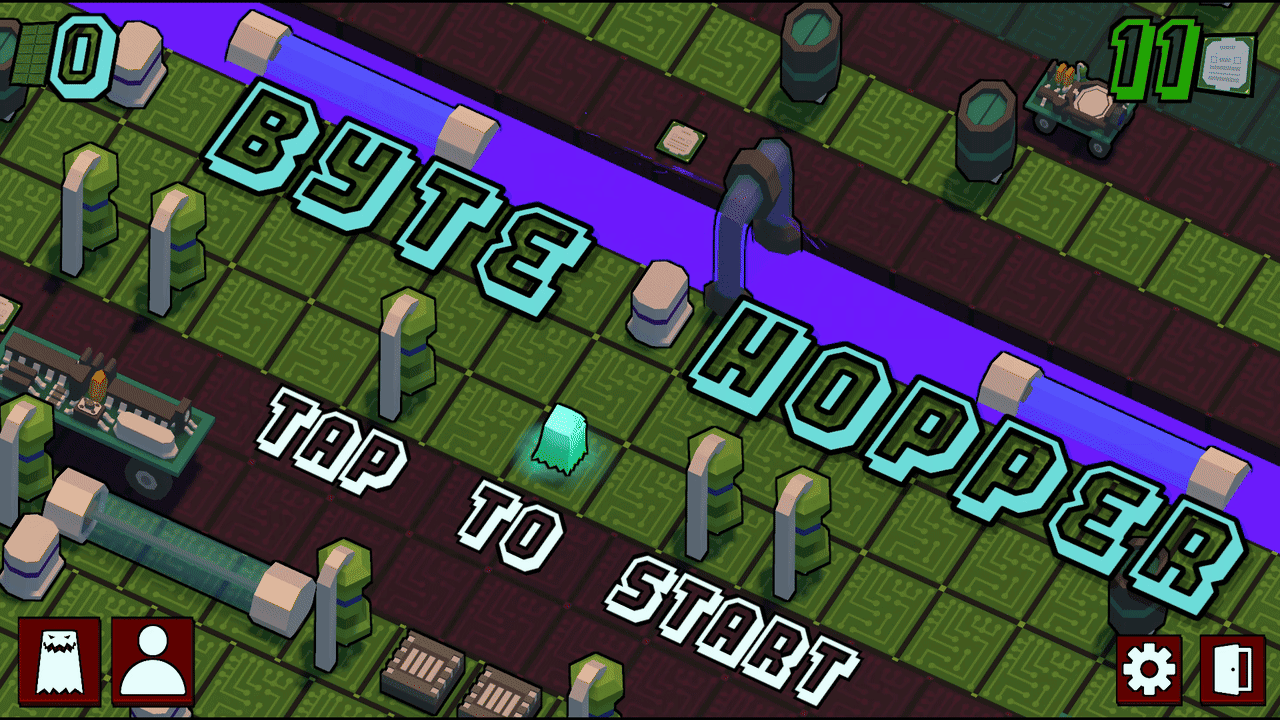
This has become one of my favorite projects so far.
Initially, I set out to create a simple Crossy Road clone to learn from an iconic arcade-style game.
However, I realized that there was an opportunity to expand beyond the original concept
and try to develop the project with unique features and gameplay elements.
Instead of copying similar games bit by bit, I wanted to try my own spin. That being a motherboard and microchip theme.
The main player is a ghost-like virus hopping through a board. They have two objectives, eat up as many CPUs as
they can and travel as far as they can.
Byte Hopper became a personal challenge to push my creative limits in game design and programming,
transforming it into an engaging, procedurally-generated arcade action game.

The game features a dynamically generated map with eight different area types,
a day-and-night cycle to increase difficulty,
and a skin shop incentivized by in-game currency collection.
Additionally, players can track their progress with detailed performance stats,
including highest distances, lifetime deaths, and more.